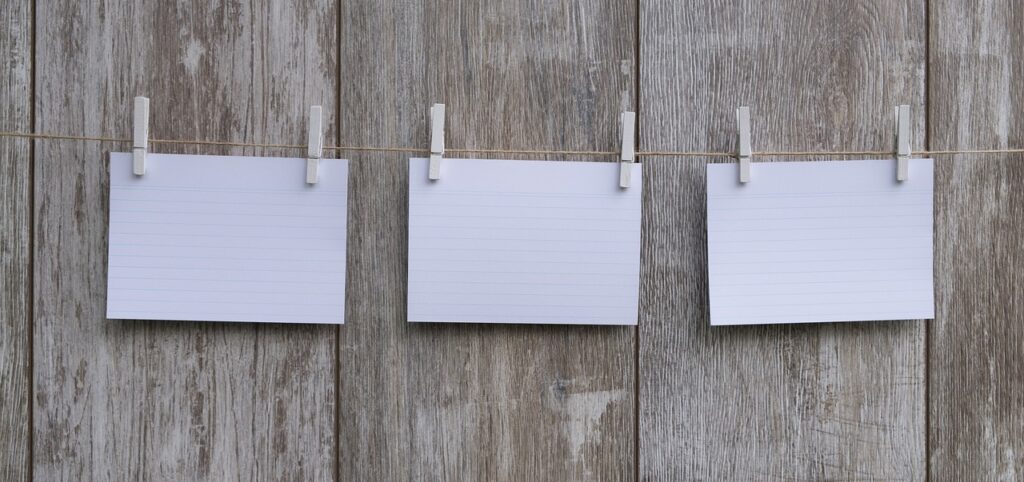Contents Overview
What Is Habit Stacking?
Habit-stacking is the process of building new habits by linking them to already existing ones. Instead of creating a new habit from scratch, you just stack it with what you’re currently doing so that the mind gets into the practice of following the new one naturally and easily.
For instance, let’s say you want to build a habit of eating nuts first thing in the morning. You can stack it onto drinking water: “After I drink my glass of lukewarm water in the morning, I will have a handful of nuts.” In a few days of following this, the mind will naturally get used to it.
Habit stacking is rightfully associated with synaptic pruning, where the brain automatically removes weak connections and strengthens the ones we practice often. When we repeatedly perform an action, the brain reinforces those neural pathways, turning them into a habit. By doing this mindfully, we assist our brain in building strong pathways for good habits while letting go of unhelpful ones.
The Origin Of Habit Stacking
The concept of habit-stacking was popularized by S.J. Scott in his book Habit Stacking: 97 Small Life Changes That Take Five Minutes or Less (2014), where he introduced the idea of linking small habits together to create powerful routines.
However, the groundwork of stacking habits comes from James Clear, who made it famous in Atomic Habits (2018), where he refined the idea by tying it to synaptic pruning, explaining how our brain strengthens repeated habits while eliminating unused ones.
Clear beautifully explains the phenomenon by making it as clear and easy as possible. He gave easy, relatable examples like: “After I pour my morning coffee, I will meditate for one minute,” or “After I sit down for dinner, I will take a few deep breaths and express gratitude for my meal.” These examples, along with his clear description of habit-stacking, make new habits easier to adopt because they’re anchored to something familiar.
Other authors like B.J. Fogg (Tiny Habits) and Charles Duhigg (The Power of Habit) have also written about habit formation, showing how small, consistent actions can lead to lasting changes in life.
Examples Of Habit Stacking
Here are some examples of habit-stacking that might help you understand how you can use them in your life:
- When I get on the subway, I will always stand instead of sitting.
- Every year on my birthday, I will donate some amount to charity.
- After I turn on the shower, I will say five affirmations.
- After I lay down in bed for the night, I will thank the universe for five positive things that happened during the day.
- After I get in my car, I will take three deep breaths.
- After I get home from college, I will sit with my parents and discuss my day with them.
- When I sit to meditate, I will switch my phone to silent mode.
- When I finish my work, I will do a three-minute visualization.
- When I feel stressed or anxious, I will close my eyes and take five slow, deep breaths.
- After I have my breakfast, I will sit outside for five minutes observing the beauty of nature.
How Does Habit Stacking Work?
Habit-stacking works by linking a new habit to an existing one, making it easier to remember and stick to. Instead of starting from scratch, you “stack” a new habit onto something you already do in your daily routine.
How It Works:
1. Identify a habit you already have.
2. Attach a new habit to it.
3. Repeat consistently until it becomes natural and instinctive.
Examples:
✅ After I brush my teeth, I will do my mirror affirmations.
✅ After I pour my morning coffee, I will write down one goal for the day.
✅ After I make my bed, I will say five things that I’m grateful for.
Stages And Actionable Steps Of Habit Stacking
Stacking habits needs just five simple steps to make any new habit stick by linking it to an existing one. Here’s how it works:
1. Identify a Current Habit
Pick something you already do every day, like brushing your teeth, going for a walk, making your bed or having coffee.
♣ Example:
✔ “I already drink coffee every morning.”
✔ “I brush my teeth daily.”
2. Identify and Attach a New Habit
Decide what new habit you want to add to your life. Once you’re clear about it, attach that small habit right after an existing one.
♣ Example:
✔ “After I make my coffee, I will write down one thing I’m grateful for.”
✔ “After I sit at my laptop, I will write my top three priorities for the day.”
3. Make It Easy
Break the new habit into shorter, doable actions so it feels effortless instead of overwhelming.
♣ Example:
✔ Instead of saying, “I will journal for 30 minutes,” start with “I will write one sentence in my journal daily.”
✔ Replace “I will meditate for 10 minutes” with “I will meditate for 3 minutes.”
4. Repeat Daily
Consistency is key, as it strengthens the habit. The more you repeat something, the more automatic and natural it becomes.
♣ Example:
✔ Once you practice habit-stacking, in two to three weeks, you’ll notice that it naturally becomes a part of your routine without needing reminders.
5. Build On It
Once the small habit sticks, go ahead and stack more habits onto it.
♣ Example:
✔ “After I stretch, I will read five pages of a book.”
✔ “After I put on my running shoes, I will do five quick push-ups to get my blood flowing.”
By stacking habits, you build a routine that feels natural, making personal development easier and more effective!
Who Is Habit Stacking For?
Habit stacking is for anyone and everyone who wants to build better habits and a healthier mindset without feeling overwhelmed. It’s especially helpful for busy people, students and individuals who struggle to maintain consistency and discipline. It’s a great way to bring change while saving time.
Stacking habits works wonders for busy people who struggle to find time to form new habits and for individuals who want to improve their lifestyle but are clueless about where to begin. It’s also beneficial for people who want to break away from bad habits, as habit-stacking makes it easier to replace bad habits with better ones while rewiring the brain to achieve goals.
It works smoothly because it makes change easy, automatic and sustainable while proving to be perfect for anyone looking to improve their life without making it feel like a burden.
The Pros And Cons Of Habit Stacking
✅ Pros ✅
1. Easy to remember
2. Saves time
3. Reduces planning time
4. Boosts productivity
5. Creates strong, lasting results
❌ Cons ❌
1. Overdoing by adding too many habits can backfire.
2. Depends on existing habits – if the base habit is weak, the new one might not stick.
3. Needs patience to see results.
4. Taking breaks can disrupt the chain.
5. Some complex habits need focused effort, not just stacking.
5 Examples Of How You Can Use Habit Stacking In Daily Life
- Morning Rituals: After brushing your teeth, drink a glass of lukewarm water. Click here to discover a list of 10 morning rituals that can easily be used for stacking habits:10 powerful morning rituals to energize your day
- For Work Efficiency: Before opening emails, write down your top three tasks for the day.
- For Fitness: After making coffee, do 10 squats.
- For Mindfulness: Before having your meal, bless the food on the plate with a short prayer.
- For Gratitude: Before going to bed, write down one thing you’re grateful for that happened during the day.
These are just a few examples of how you can use habit stacking for your well-being. You have the liberty to experiment and add whatever feels best for you. Just remember to go slow and not add too many new habits at once, as that can overwhelm your mind and prevent you from forming them.
Do’s And Don’ts Of Habit Stacking
Do’s
✅ Begin with easy, small habits.
✅ Anchor to an already existing Strong Habit
✅ Be Clear and Specific
✅ Add a small reward to reinforce the habit.
✅ Repeat daily to build long-term success.
Don’ts
❌ Don’t Stack Too Many habits at Once
❌ Avoid stacking on weak habits- the ones you don’t do regularly.
❌ Don’t Be Vague in your approach
❌ Don’t Skip Monitoring your progress
❌ Don’t Be Hard on Yourself. Missing a day doesn’t mean failure. Just restart!
Tips For Habit Stacking
- Always pair with an already existing strong habit to make the new one effortless and smooth.
- Be specific and clearly define when and how you will include the new habit.
- Stay consistent, and if by chance you miss a day, don’t overthink- just start again!
- Insert your habit into the “before/after (current habit), I will (new habit)” template to ensure it’s easy to follow and remember.
- Follow the two-minute rule to finish your new habit within the two-minute span to avoid burnout.
- Maintain a journal to track your progress and stay motivated.
- Don’t overdo habit-stacking by adding too many new habits at once. Go slow and start with one or two simple habits, then slowly build on them.

Benefits Of Habit Stacking For People With ADHD
Habit stacking works well for individuals with ADHD (Attention Deficit Hyperactivity Disorder), a condition where a person has trouble focusing, staying organized and controlling impulses. People with ADHD often struggle with tasks that require sustained attention, leading to difficulties in school, work and daily life.
For people with ADHD, stacking habits can be a game-changer. I have read ample stories of the same and how people have benefitted from it. When a person with ADHD links a new habit to their already established routine, they save time and energy by avoiding the entire process of creating structure and building a new routine. While a person with ADHD finds focusing on things difficult, stacking habits makes the process simple and doable without causing mental burnout.
For example, let’s say a person with ADHD wants to add a habit of taking multivitamins daily but finds it difficult to remember to add it somewhere during the day. Here, habit-stacking comes to the rescue, as they can stack the new habit of taking the multivitamin right after having breakfast or before sitting down to work- both of which are already part of their daily routine.
People with ADHD often find it hard to stick to long-term goals because of distractions and lack of focus. By focusing on smaller, stacked habits, they can feel more accomplished and stay motivated. For instance, stacking a five-minute meditation right after making coffee can help them start the day with a sense of calm, making it easier to tackle bigger tasks.
FAQs
♦ What is the goal of habit stacking?
The goal of habit stacking is to make it easier to build new habits by attaching them to an existing one. This helps create a consistent routine and reduces the effort needed to remember the new habit. It makes new habits stick faster and feel more natural.
♦ What is an example of habit stacking?
An example of habit stacking is brushing your teeth and then immediately drinking a glass of water. Here, brushing teeth is already a regular habit, and stacking the water-drinking habit after it makes it easier to remember and follow.
♦ What is the power of habit stacking?
The power of habit stacking lies in its simplicity and effectiveness. It combines habits in a way that makes the new behavior automatic, leading to long-lasting change with minimal effort.
♦ What habit is stacking?
Habit stacking is the process of pairing a new habit with an existing one to make it easier to remember and follow. It’s about building on routines that already happen naturally.
♦ What is the habit stacking formula?
The habit stacking formula is: “After/Before [current habit], I will [new habit].” This structure helps you clearly link the new habit to something you already do regularly.




